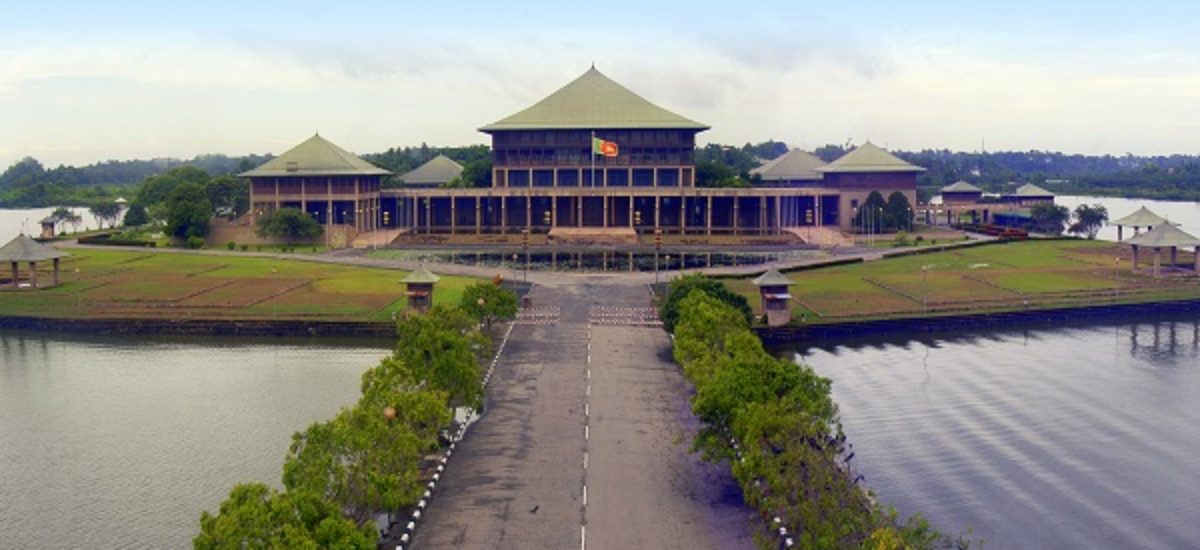Featured image courtesy Daily Mirror
October 30 marked the beginning of a Parliamentary debate around the recently released draft interim report on constitutional reform by the Steering Committee in the Constitutional Assembly.
In order to better inform the commentary around the debate, Groundviews is releasing a series of short videos deconstructing the content of the draft interim report. View the second in this series below, framed by a short list of frequently asked questions around the constitutional reform process.
“A unitary state could have features and attributes of a federal state and vice versa” – could you give some examples of this?
The United Kingdom could be considered a unitary state because it has been governed by the UK Parliament, which has ultimate power. However, devolution was introduced in 1998, and is a continuing process which has granted more and more powers to the regional governments in Scotland, Wales and Northern Ireland. As a result, the UK is more devolved than many federations.
On the other hand, countries like the United States and Australia are considered leading examples of federalism because they have strong, autonomous state governments. However, the central governments in these countries retain extensive powers which make it very unlikely to impossible that their states can, for example, secede or break away.
If this is the case, why is there such controversy around these terms?
These terms have acquired political significance which might be different to their legal meaning. A survey conducted by the Centre for Policy Alternatives in October 2016 found that 58% of Sinhala respondents understand the term unitary to mean “one united and indivisible country”. [1]The use of “federalism” creates the fear that Sri Lanka can become divided as a country with different provinces breaking away, and the use of “unitary” is seen as a guarantee that the country will remain undivided.
But looking at the two terms in practice shows that they are simply different ways of governing a country, and the differences between the two are not always clear cut. State practice on unitary and federal states shows how these terms are continuously evolving. Countries have often developed hybrid systems to deal with exactly the kinds of challenges in accommodating diversity that Sri Lanka faces today.
Most importantly, a state’s sovereignty and territorial integrity isn’t automatically guaranteed by the use of a single word to define it – there are other, more crucial factors both within and outside a constitution which can impact a state’s existence more.
Several parties, such as the JHU, the Joint Opposition have said the draft Interim Report supports a federal state. Is this true?
No. The Interim Report only puts forward several proposals on the composition of the State. While these proposals further devolve certain powers to the Provinces, the Central Government retains vast powers, which makes it difficult to say that the proposals support a federal state.
These proposals are based on observations made by the Steering Committee, following a public consultation process spearheaded by the Public Representations Committee for Constitutional Reform (PRC). Copies of this report were given to members of the Steering Committee as well as to the Constitutional Assembly for their consideration.
What is the reasoning behind the proposals put forward on devolution in the draft Interim Report?
Sri Lanka has seen several attempts since the late 1980’s to increase devolution. There are several government documents including the draft constitution of 2000 which envisaged a system of government with more devolution. The Interim Report’s proposals are the latest attempt at formulating proposals on how devolution of power can work in Sri Lanka. The report contains options, some of which have been borrowed from previous proposals and a few new proposals.
Apart from the principle of subsidiarity, explained in the video, the province has been suggested as the primary unit of devolution. This has been broadly accepted by Chief Ministers, Provincial Councils and various Sub Committees. There have also been proposals put forward for Community Councils – to ensure that the rights of minority communities will be protected at different levels of government. Local Authorities have been proposed as a third tier of government under Provincial Councils, subject to uniform legislation prescribed by the Central Government.
The report also suggests that the division of powers between the different levels of government be clear and unambiguous so it proposes a national list, a provincial list and a local government list marking out the subject areas each tier of government should and can have responsibility for.
[1] See Table 2:1 “Opinion poll on Constitutional Reform” (2016): http://www.cpalanka.org/wp-content/uploads/2016/10/Opinion-poll-on-Constitutional-Reform_Final_Oct-16.pdf

